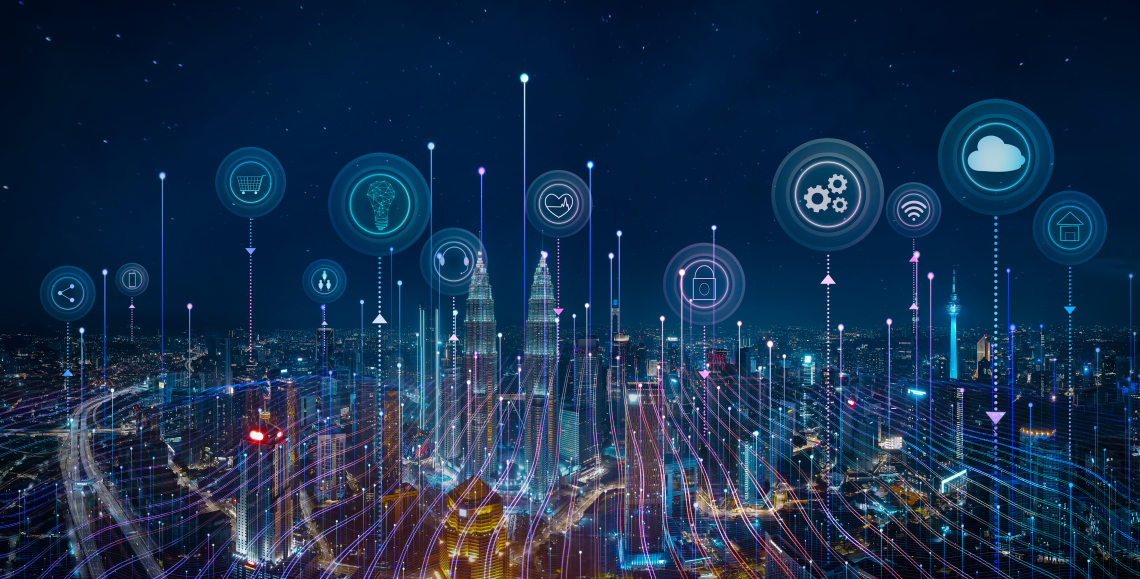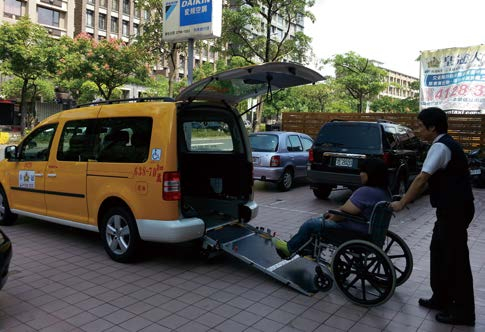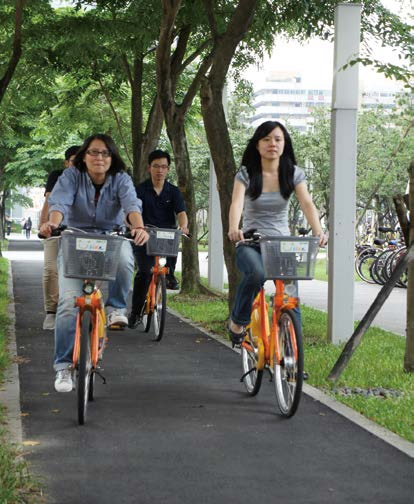To ensure that residents in the Greater Metropolitan Taipei Area are worryfree about water use, the City has actively implemented operations such as water and soil conservation, tree planting and afforestation, and storing clear water and releasing muddy water and drainage to extend the service life of Feitsui Reservoir. In terms of transportation, “shared, green, digitized and safe” are the visions for public transit. Through combining low-carbon, sustainable transportation and enhancing user convenience, provide “smart, friendly, convenient, and efficient” transportation services to the people. Encourage residents to take public transportation and reduce the usage of private vehicles. Furthermore, the City promotes paratransit buses and general taxies, also provide barrier-free transportation services to the elderly and people with disabilities or mobile impairments so that accessible transportation becomes more holistic, and social welfare will be realized, while residents with disabilities will be cared for at the same time. Reinforce water resources, transportation and social welfare strategies, in order to maintain the daily needs of the residents.

Develop quality, reliable, sustainable and resilient infrastructure, including regional and transborder infrastructure, to support economic development and human well-being, with a focus on affordable and equitable access for all.

Significantly increase access to information and communications technology and strive to provide universal and affordable access to the Internet in least developed countries by 2020.
Discounts of 480 points ($) per month are offered to residents over 65 years old and indigenous people over 55 years old with household registration in the City. Originally, they were only to be used for city buses and senior citizen taxis; since the end of October 2017, it has expanded to Taipei MRT, Maokong Gondola, public venues, YouBike, double-decker sightseeing buses.
To encourage active participation of elders in various activities and maintain a healthy life, the use was expanded to the Danhai light rail transit and district sports center facilities in 2019, so that they can make use of public transportation and recreational venues in the City and increase the convenience. In 2019, the usage rate was 124,911,564 times, representing a steady growth of 8.75% from 2018.
Taking into account the needs of people with disability walking on the road, the City has duly mapped out the pedestrian crossing lines exactly pursuant to the "The Regulations for Road Traffic Signs, Markings, and Signals" and the geometric conditions of the intersection roads with barrier-free ramps to connect the physical sidewalks and provide a friendly pedestrian environment.
In compliance with Item 7, Paragraph 1 of Article 16 in Public Assistance Act, “Taipei City Low-income Household Transportation Subsidy Operation Instructions for Middle School or Higher Students” was drafted, and transportation expenses for middle school or higher students from low-income households were subsidized.
Transportation subsidies are on application basis to be applied for in each semester (for middle schools, each person is subsidized NT$500 per semester; for those studying in local senior (vocational) high schools, each person is subsidized NT$1,000 per semester; for those studying in senior (vocational) high schools outside the city, each person is subsidized NT$1,500 per semester). A list of individuals matching application requirements will be made every January and August, and applications will be uniformly mailed to them, from which they can apply upon registration of the semester. The Department of Social Welfare will be responsible for the fee appropriation and write-off to reduce the burden on the public.

To implement social welfare policies and care for residents with physical or mental disabilities, promote paratransit bus businesses and wheelchair-accessible taxi services. The handicap bus provides point-to-point transportation services to people with physical or mental disabilities. After reservations are made via channels such as dispatch hotline, voice or Internet, the entrusted service company will arrange service vehicles and drivers according to each passenger’s reservation information. The passenger pays 1/3 of regular taxi’sfare, which will reduce the burden on people with disabilities. In 2019, the total number of wheelchairaccessible vehicles was 328, providing 647,444 trips in a year. The average monthly trips was 53,954, carrying about 98,700 passengers.
The wheelchair-accessible taxi adopts a wheelchair-adapted accessible design to provide barrier-free transportation services to the elderly and people with disabilities or mobile impairments so that accessible transportation become more holistic. Since official operation in February 2013 until 2019, 332 wheelchair-accessible taxis had been subsidized to provide accessible transportation services, accumulatively serving 885,014 trips, of which 617,207 were accessible transportation trips, accounting for about 69.74%.

The City's green transportation development framework is based on the MRT with the bus as a supplement, and the use of bicycles and walking to complete the first and last miles of the service. Statistics as of December 31, 2019, the Taipei Metro had completed 136.6 kilometers of routes and 117 stations, with an average daily use of more than 2 million passengers; the bus system has a total of 14 private operators and up to 289 bus routes, with 1.3167 million daily trips; YouBike has a total of 400 stations installed (with each station serving up to about 350 meters in average service radius) and 13,072 vehicles, with an average daily use of about 78,000 passengers. To encourage citizens to use public bicycles, subsidization for the first 30 minutes of use is provided. The City also sets up 15 bus lanes to provide residents with more convenient public transportation services.
The key factor affecting the life of the reservoir is sediment, and soil and water conservation of surrounding slopes around the reservoir's storage area is an important task in the extension of the life of the reservoir and its sustainable use. Since 2003, the medium-term plan for soil and water conservation for Feitsui Reservoir has been initialized to strengthen afforestation. With one phase being four years long, four phases had been completed by 2019. To coordinate with operation strategies, dredging operations are carried out. At present, the cumulative sediment rate of the reservoir in the past years is only 6.62%, which is the lowest sediment of large-scale reservoirs in the country. The average annual sediment volume is 769,000 cubic meters, which is lower than the designed annual sediment volume of 1.136 million cubic meters; the average annual sediment volume in the past 10 years has been greatly reduced to 375,000 cubic meters, where life of the reservoir is extended and also water supply for residents of the Greater Taipei Area is secured.
For dam safety inspect ion and monitoring, in addition to prudent operation of the equipment in the maintenance and operation of the Feitsui Power Plant to ensure and strengthen operation efficiency of the plant and to maintain the hydraulic gate facilities. Scheduled overhauls of the gate are conducted, and dam safety monitoring instrument is also updated accordingly. In 2019, all 13 groups of dam plumbline were updated. It is planned to complete the update of 21 strong motion accelerograph stations near the dam area by the end of 2020 to ensure dam safety.